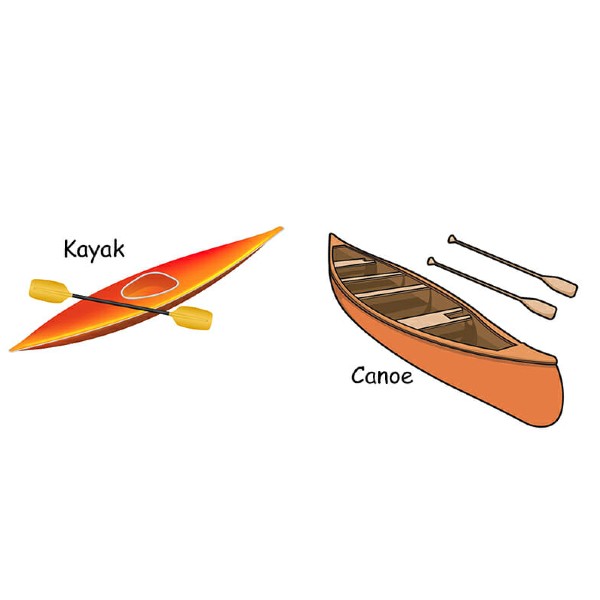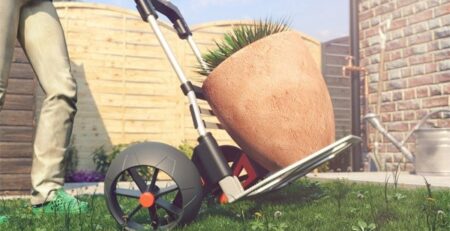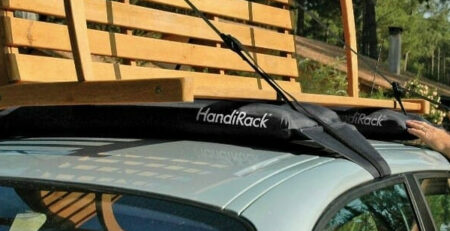How to Pick the Perfect Kayak or Canoe for You – The HandiWorld Guide
A lot of our loyal HandiWorld customers are water sports enthusiasts, many with a particular interest in kayaks and canoes, so that’s made us pretty intrigued by them too.
The world of water sports equipment is a vast one, with plenty of gear to choose from and different products being right for different people but today we’re going to be making things a little easier by sharing with you our guide as to how to pick the right kayak or canoe for you and we’ll even be throwing in a couple of handy transportation tips to help get your vessel to the waterfront.
Kayak vs Canoe – What’s the Difference?
Before we get on to how to pick the right raft for your water sports adventures, let’s just establish the difference between a kayak and a canoe because that’ll be a big deciding factor in which one you go for.
They may look similar in size and shape but the main difference between a kayak and a canoe is where the rider sits. In a kayak, the rider has a small designated area for seating and the rest of the boat is closed off, hence they are specified as ‘one-man’ or ‘two-man’ because the seating area is purpose-built whereas canoes are either totally open top boats where the rider can sit either side on a raised seat or kneel on the base of the boat.
Another difference between the two is the paddle you use, kayaks are powered by double-bladed paddles and canoes are rowed using single-bladed paddles.

Picking the Right Kayak
Starting with kayaks, there are a few things to think about when choosing the right one for you and they’re as follows:
- What kind of waters will you be riding in? Open water or closed lakes, will it be warm or cold water?
- Do you want to sit on top or sit inside and how does this fit with where you intend to ride?
- What kind of speeds are you looking for? This will determine the length of your kayak
As a general rule, ‘sit on top’ kayaks are better for beginners or people who simply don’t like to be confined. You’re going to get wet using a SOT kayak, it’s inevitable but they’re self-bailing which means they drain water themselves through the design of the raft, they’re also ideal for warmer waters or environments where you’re likely to want to get out and swim.
When it comes to sit inside kayaks, these are ideal for pros who want speed as the general design of the raft is streamlined. If you’re heading into cold water and want to stay warm and dry, a sit inside is a far better option but it’s worth remembering if you happen to flip over, it’s a far trickier situation to recover from.
When choosing the length of your kayak, it’s generally known that the longer and narrower your kayak, the faster it will go but the wider the kayak, the more stable it will be on the water but perhaps slower, so this is something you have to weigh up depending on where you’ll be riding and how well-trained and experienced you are as a rider.
Picking the Right Canoe
Similarly to picking a kayak, there are a few things to consider before choosing the right canoe for you and one of the biggest deciding factors is location, where will you be using this canoe?
The kind of waters you’ll be riding in will heavily dictate the kind of canoe you need, especially the shape of the canoe.
Paddling.com have some great advice for picking the perfect canoe and they suggest that the flatter the bottom of a canoe, the more stable it will be but the slower it will travel and the rounder the bottom of your canoe, the faster you’re likely to go but the more instability you’ll experience, so you need to consider whether you need speed or stability when choosing your canoe.
Another reason you need to know where you’re going to want to ride your canoe is that when deciding whether you buy a canoe with a keel or not, this is dependent on where you will be riding. Lake canoes should and will have a keel and river canoes shouldn’t have a keel and this also determines the manoeuvrability of the canoe.
The rocker of a canoe is how much the hull curves from the bow to the stern and this is another factor that dictates hull speed. There’s a choice between fully rockered and moderate rockered canoes, both with differing speed potentials, so choose wisely.
Most experts will advise you to try before you buy when it comes to canoes as there are many things to consider and you need the right one to allow you to ride in the way you want to. Many water sports clubs will have canoes to hire, so test as many out as you can before finally purchasing your own.
Transporting Your Kayak or Canoe
There’s no denying that a kayak or a canoe is a big piece of equipment to transport but HandiWorld can help make light work of it.
When it comes to moving your boat from home to where you want to ride, you need the help of the UK’s only inflatable roof rack, the HandiRack. Our very own patented creation that makes transporting loads of up to 60kg easier than ever before.
Simply attach the HandiRack to your car and then attach your kayak or canoe to your HandiRack using the HandiBungee cords and there you go, you’re ready to hit the road and head off on your adventure.
Once you’ve reached your destination, it’s time to unload the kayak or canoe from the car and move it down to the waterfront and that can be pretty backbreaking work if you do it without the help of a purpose-built trolley.
The HandiKart is our very own kayak or canoe trolley that is specially designed to move your boat from your car to the waterside in one swift and easy move, without involving much manpower from you. Made using Camba Wheel Technology to ensure it can roll smoothly on any terrain, the HandiKart weighs just 4kg and measures 560mm wide, making it compact to transport.
If you’re on the hunt for a new kayak or canoe, we hope this buying guide has come in handy. If you’ve got any other top tips for picking a kayak or canoe, share them with us on Twitter or Facebook.















